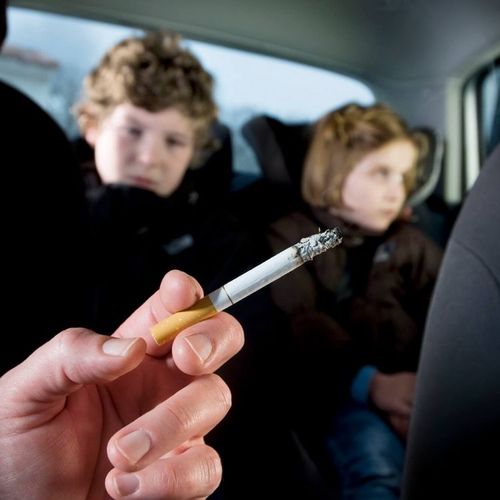Secondhand smoke is thought to be responsible for 3,000 lung cancer deaths every year in tire US. The number of cardiovascular deaths due to secondhand smoke is even higher-between 37,000 and 50,000 per year, according to Dr. Norman Edelman, consultant for scientific affairs at the American Lung Association.
Triple Threat
The tars, nicotine and carbon monoxide in cigarette smoke pose a triple threat to lung tissue and blood vessels by boosting cancer risk, constricting airways and arteries, and robbing blood of precious oxygen.
"By speeding up the heart and squeezing down the vessels, it just puts a big burden on your heart," Edelman says. In fact, a British study found that men exposed to secondhand smoke over long periods of time faced a 50% higher risk of coronary heart disease than men who did not have such exposure.
Tobacco smoke is extremely harmful, even secondhand. "It has three major toxic effects," Edelman says. "One [is] the tars coat your airways, and if they do it long enough, [it may] cause cancer. The second is nicotine; it's a vasoconstrictor-it squeezes your blood vessels down." Vasoconstriction can go unnoticed in healthy people, but for others it brings immediate symptoms. People who have peripheral artery disease, which causes poor blood flow in the extremities, are especially at risk. If they inhale smoke, they may get pain quickly because they've already got compromised vessels, Edelman explains. The third toxic constituent is carbon monoxide. "It essentially robs your blood of oxygen by as much as 10% to 12o%," Edelman says.
Real Risks
Thomas Glynn, director of cancer science and trends at the American Cancer Society (ACS), says these findings "should reinforce your determination not to be exposed to secondhand smoke. It can't be dismissed as something that is not harmful."
Unfortunately, far too many Americans continue to disregard the threat of passive smoking, says Dr. Richard Stein, a spokesman for the American Heart Association and a cardiologist at Beth Israel Hospital in New York City. "This isn't just some feel-good environmentalist issue," he says. "This is everybody's issue."
He points to one recent study that tracked the risk for heart attacks in both smokers and nonsmokers. The study found that heart attack risks for individuals at the highest level of secondhand smoke exposure were 2.5 times higher than those in the low range.
"That's a major change in risk-as much as having a risk factor like high blood pressure," Stein notes
The Smoking Ban
Based on the accumulated evidence, three major health groups-the American Cancer Society, the American Heart Association and the American Lung Association-have long called for bans on smoking in workplaces, including bars and restaurants.
"Understand, too, that when people argue legislatively against passive smoking, it's not about simply trying to make it tougher for smokers so that they have to give up smoking," Stein says. "This is a legitimate health issue, in terms of protecting the air quality for everybody."
Although approximately 1,700 US cities already have put some sort of comprehensive smoking ban in place, initiatives to curb publics puffing still meet strong resistance, especially from restaurant and bar owners worried about their bottom lines.
Public smoking bans may even be saving lives, one study suggests. Researchers reviewed hospital records from the city of Helena, Montana, where a public smoking ban enacted in April 2002 was overturned by the following December.
However, in those six smoke-free months, the researchers discovered that the number of patients admitted to Helena hospitals due to heart attacks fell by 40%.
